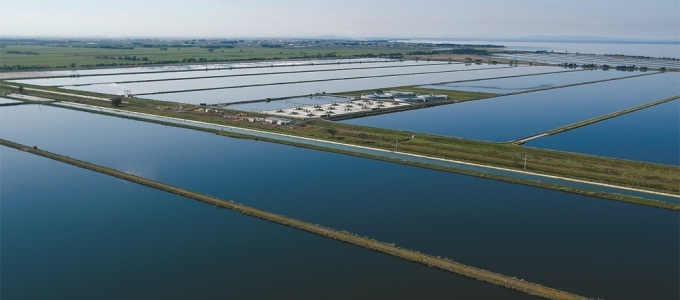

27/06/2016
Wastewater treatment is proving a sound investment, as examples from around the world show its benefits for human health, also for forestry and industry, biogas, domestic water, heat, electricity and fertilizer.
A new e-book released recently by WaterLex and the United Nations Environment Programme (UNEP), entitled Good Practices for Regulating Wastewater Treatment: Legislation, Policies and Standards, details successful examples of converting wastewater to profit.
 |
| Western Treatment Plant Lagoons by Melbourne Water |
The costs of investment in wastewater treatment are high, at US $30 billion/year because of missing opportunities for profit. In North America, for example, 75% of wastewater is treated but only 3.8% is reused, while in low income countries as little as 8% is treated.
The book citing the Melbourne case, where the largest treatment facility is also a nature reserve protected by the Ramsar Convention on wetlands, chalenges the negative image of wastewater plants. The city treats more than half of its wastewater (500 million m3/day) - by harnessing the natural processes occurring in an 11,000 ha lagoon system. The by-product of this method, methane gas is trapped and used to produce electricity, helping to mitigate climate change and reducing odour.
The study also showcases how legal systems can influence water quality and accessibility. For example, the right of humans to a healthy environment, explicitly provided for in the constitutions of 177 countries, has helped in the clean-up of the Matanza-Riachuelo River Basin in Argentina.
The river, flowing through Buenos Aires, was being polluted by untreated domestic wastewater and effluents from more than 3,000 industries - representing 24 % of the country’s GDP - resulting in child mortality rates twice as high as in neighbouring provinces. Argentina’s Supreme Court ordered to set up a multi-sector civil society oversight council, which has already ensured the removal of 70,000 tonnes of refuse from the river and 243,000 m³ of rubbish dumps.
The book also explores the different types of wastewater treatment possibilities, such as the combined plant and cooperative system in Finland, where cities rely on plants that are self sufficient in heat and 50% self-sufficient in electricity, while remote rural communities set up cooperatives to treat their wastewater.
The As-Samra plant in Jordan, which produces water for agriculture, is 95% self-sufficient in biogas. Singapore, which currently imports 40% of its water, is exploring innovative water treatment solutions to achieve its goal of water independence by 2060. After more than 2 years of testing it has now installed 4 water reclamation plants, processing 547,200m³/day.
The e-book, released in Stockholm as part of the World Water Week celebrations, is a timely response to the 1/3 decrease of biodiversity in rivers, lakes and wetlands caused by deteriorating water quality. It recommends an integrated reaction to the problem, with a special consideration for the urban environment, as the population of city dwellers is projected to reach more than 6 billion in the next 40 years. Currently, around 90% of untreated wastewater flows are generated in densely populated coastal areas
Lưu Trang (UNEP Source)